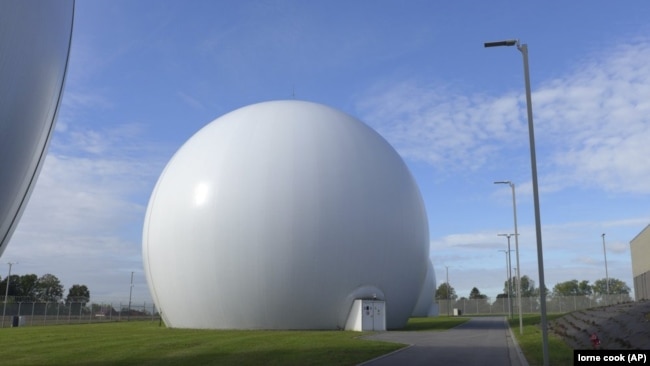宇宙空間通信網争奪戦
空を見上げると、青い空間が。。。
夜空には満点の★ほし星。。。
今年始めに行った、NZの天の川が思い起こされますが。。。
静かなる宇宙空間、そこでは熱い戦いが繰り広げられていました。
情報争奪戦!!!
さぁ、早速聴いてみましょう。
今日のVOA
Let's listen!!
- NATO、中国とロシアの懸念を受けて新宇宙センターを設置へ
- 世界の人口衛星保有数
- 人口衛星に侵入するハッカー募集?
- NATO to Set Up New Space Center Amid China, Russia Concerns
NATO、中国とロシアの懸念を受けて新宇宙センターを設置へ
NATO to Set Up New Space Center Amid China, Russia Concerns
October 21, 2020
ベルギーのケスター村には 丘の上にフェンスで囲まれた極秘の建物があります。 "レーダー・ステーション "と呼ばれています。 建物の近くで謎のロシア人を見たと主張する人もいます。 他の人々は、この地域が米国の核弾頭の基地として使われていたかもしれないと示唆しています。
この建物が興味を惹かれる理由は 簡単にわかります。 ブリュッセルの西約25キロの農地の真ん中に、大きく白いケブラー製のドームが光り輝く宇宙船のようにそびえ立っています。
これらの建物は、NATOの宇宙通信網を支える重要な拠点であるケスター衛星地上局を構成しています。ケスター衛星地上局は、NATOの宇宙通信網を支える重要な拠点であり、軍事同盟が運営する4つの基地の中では最も大きく、最も近代的な基地なのです。
人工衛星はNATOにとって重要なものです。地球を周回する2,000個の衛星のうち、半分以上がNATO諸国によって運用されています。衛星は、携帯電話や銀行のサービスから天気予報まで、確かにあらゆるものがつながっています。アフガニスタンやコソボのような場所にいるNATOの司令官は、ナビゲーション、通信、情報の共有、ミサイル発射の特定に衛星の一部を使用しています。
今週、ケスター衛星地上局は新しい防衛組織の一部になります。NATOは、衛星通信を運用するための宇宙センターを創設すると発表する予定です。それはまた、世界中の重要な軍事作戦を支援することになります。
12 月に、NATO の指導者は、宇宙が陸、海、空およびサイバースペースの後の作戦の同盟の”第 5 の領域”であることを宣言しました。
木曜日から、NATOの国防相は2日間の協議を開始します。会談の間に、大臣はドイツのラムシュタインにあるNATOの航空司令部に基づく新しい宇宙センターのための計画を承認すると期待されています。
これは、”情報を共有し、我々の活動を調整する”NATOの活動のための宇宙支援の中心になります、とNATO事務総長イェンス・ストルテンベルグ氏は言います。
これは、急速に変化する技術の世界で先を行くためのNATOの努力の一環です。NATO は中国およびロシアによる宇宙におけるますます積極的な行動が見られことに心配をしています。
約80カ国が人工衛星を保有しており、民間企業もその数を増やしています」。1980年代には、NATOの通信ネットワークのごく一部が衛星を利用していました。今日では、少なくとも40%に達しています。冷戦時代には、NATOには20以上の通信局がありました。しかし、新技術の導入により、世界最大の安全保障同盟であるNATOは、わずか4つの基地局でその通信範囲を2倍に拡大することができるようになりました。
ケスターでは、ケブラードームの下にある4つの衛星アンテナが、ベルギーにあるNATOの文民・軍事本部と世界中の他の作戦を接続しています。
これらのアンテナは、ヨーロッパやアフリカからの情報や画像を赤道上の宇宙空間に送り、そこにはアメリカ、イギリス、フランス、イタリアなどの同盟国が所有する衛星が周回しています。NATO自体は衛星を保有していません。
世界中の船や航空機、建物の司令官が、命令や画像、情報を入手したり、任務を準備したり、部隊や軍備を移動させたりするために、情報を解読しています。ケスターからは、30分以内にNATOのための新しい通信回線を設定することができます。
建物は特別なセキュリティシステムを備えており、テロ攻撃に対抗するために建てられています。しかし、NATOの同盟国は、地球上の高い位置にある反衛星兵器を含む他の種類の攻撃を心配しています。
「ロシアや中国を含むいくつかの国は、人工衛星を盲目にしたり、無効にしたり、撃墜したり、軌道上に危険な破片を作り出したりする可能性のある反衛星システムを開発している」とストルテンバーグ氏は言います。
NATOは、その行動は”防衛的であり、国際法に完全に沿ったものであり続ける”と述べています。ストルテンバーグ氏は、NATOは宇宙に武器を置く計画はないと、過去1年にわたって繰り返し述べてきました。
世界の人口衛星保有数
2020/02/02 防衛省より☟
https://www.mext.go.jp/kaigisiryo/content/000034833.pdf
軍用と指摘される人工衛星の種類と運用基数(2019年3月末時点の集計、括弧内は2008年時点の集計)偵察衛星測位衛星早期警戒衛星通信衛星の合計数
アメリカ 125
中国 103
ロシア 96
インド 12
日本 11
イギリス 8
フランス 7
人口衛星に侵入するハッカー募集?
2020年5月04日 by Zack Whittaker
ハッカーたちがバグを見つけるために戦闘機のシステムに侵入することを許されたのは、このコンファレンスが最初だった。7人のハッカーで構成されたチームはわずか2日間で、膨大な数の脆弱性を見つけたそうですよ。
NATO to Set Up New Space Center Amid China, Russia Concerns
 Satellite dishes inside Kevlar domes at the Kester Satellite Ground Station in Kester, Belgium, Thursday, Oct. 15, 2020. (AP Photo/Lorne Cook)
Satellite dishes inside Kevlar domes at the Kester Satellite Ground Station in Kester, Belgium, Thursday, Oct. 15, 2020. (AP Photo/Lorne Cook)
The Belgian village of Kester is home to a group of top-secret, fenced-off buildings on a hill some call “the radar station.” Some people have claimed to have seen mysterious Russians near the buildings. Others have suggested that the area might have been used as a base for U.S. nuclear warheads.
It's easy to see why the buildings would be of interest. Four large, white, Kevlar domes sit like shining spacecraft in the middle of farmland, about 25 kilometers west of Brussels.
The buildings make up the Kester Satellite Ground Station, an important center that supports NATO’s space communications network. It is the biggest and most modern of four stations the military alliance runs.
Satellites are important to NATO. More than half of the 2,000 satellites orbiting Earth are operated by NATO countries. The satellites make sure everything is connected, from mobile phone and banking services to weather forecasts. NATO commanders in places like Afghanistan or Kosovo use some of them to navigate, communicate, share intelligence and identify missile launches.
This week, the Kester Satellite Ground Station will be part of a new defense organization. NATO is set to announce it is creating a space center to operate its satellite communications. It will also assist in important military operations around the world.
In December, NATO leaders declared that space was the alliance’s “fifth domain” of operations, after land, sea, air and cyberspace.
Starting Thursday, NATO defense ministers will begin two days of discussions. During the talks, the ministers are expected to approve plans for the new space center, to be based at NATO’s Air Command in Ramstein, Germany.
It will be the center for space support for NATO operations, “sharing information and coordinating our activities,” NATO Secretary-General Jens Stoltenberg said.
It is part of NATO’s efforts to keep ahead in the fast-moving world of technology. NATO is worried about what it sees as increasingly aggressive behavior in space by China and Russia.
Around 80 countries have satellites and private companies are adding to that number. In the 1980s, only a small part of NATO’s communication network used satellites. Today, it is at least 40 percent. During the Cold War, NATO had more than 20 stations. But new technologies now permit the world’s largest security alliance to double its coverage with only about four stations.
At Kester, four satellite dishes beneath Kevlar domes connect NATO’s civilian and military headquarters in Belgium to other operations around the world.
The dishes send information and images from across Europe and Africa into space above the equator where satellites owned by allies like the United States, Britain, France and Italy orbit. NATO itself does not own any satellites.
Around the world, commanders in ships, aircraft and buildings decrypt the information to get orders, pictures and intelligence, prepare missions, or move troops and military equipment. From Kester, new lines of communication can be set up for NATO within 30 minutes.
The buildings have special security systems and were built to resist terrorist attacks. But NATO allies are worried about other kinds of attacks involving anti-satellite weapons high above the Earth.
“Some nations – including Russia and China – are developing anti-satellite systems which could blind, disable or shoot down satellites and create dangerous debris in orbit,” Stoltenberg said.
NATO says its actions “will remain defensive and fully in line with international law.” And Stoltenberg has repeatedly said over the past year that NATO has no plans to put weapons in space.
________________________________________________________________
Words in This Story
dome – n. a circular enclosure
navigate – v. to determine the correct sea or land route
domain – n. a specific area
coordinate – v. to put the details together
dish – n. the rounded exterior of a satellite
equator – n. an imaginary line drawn around the earth equally distant from both poles, the parallel of latitude
decrypt – v. cracking a language code
debris – n. the leftover garbage after a catastrophe